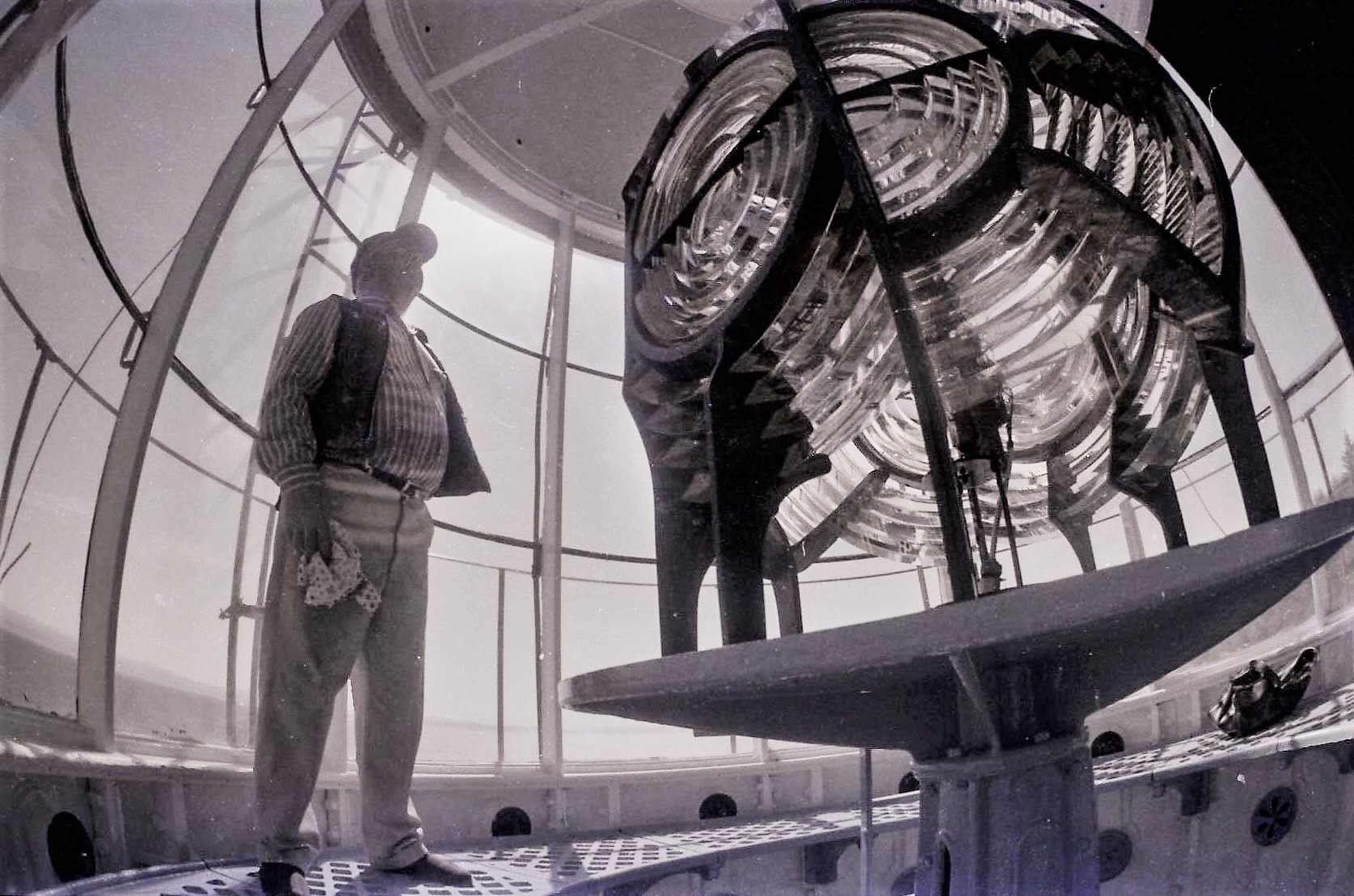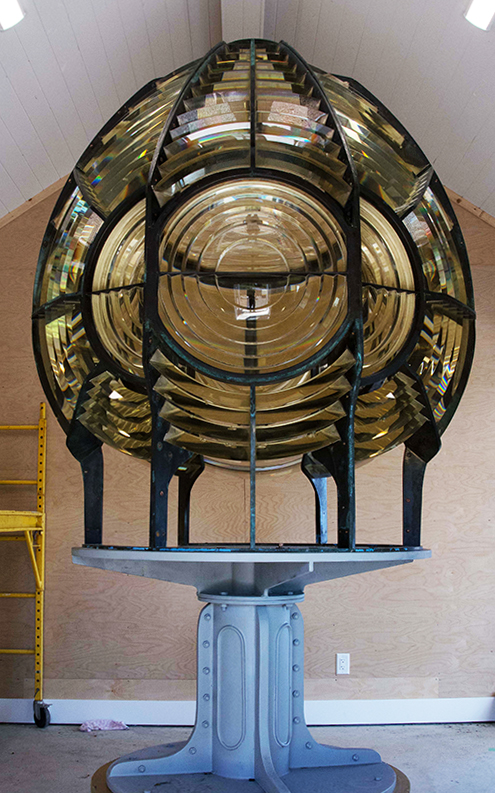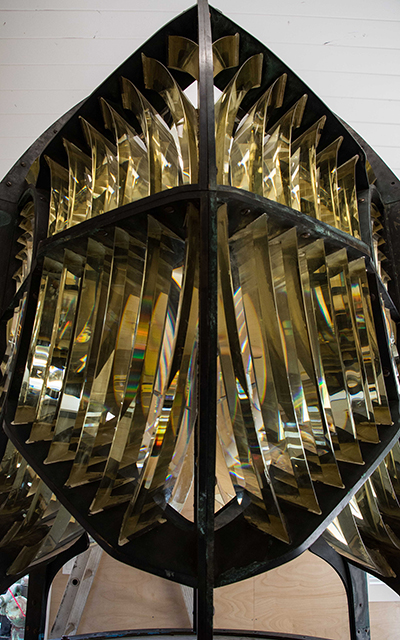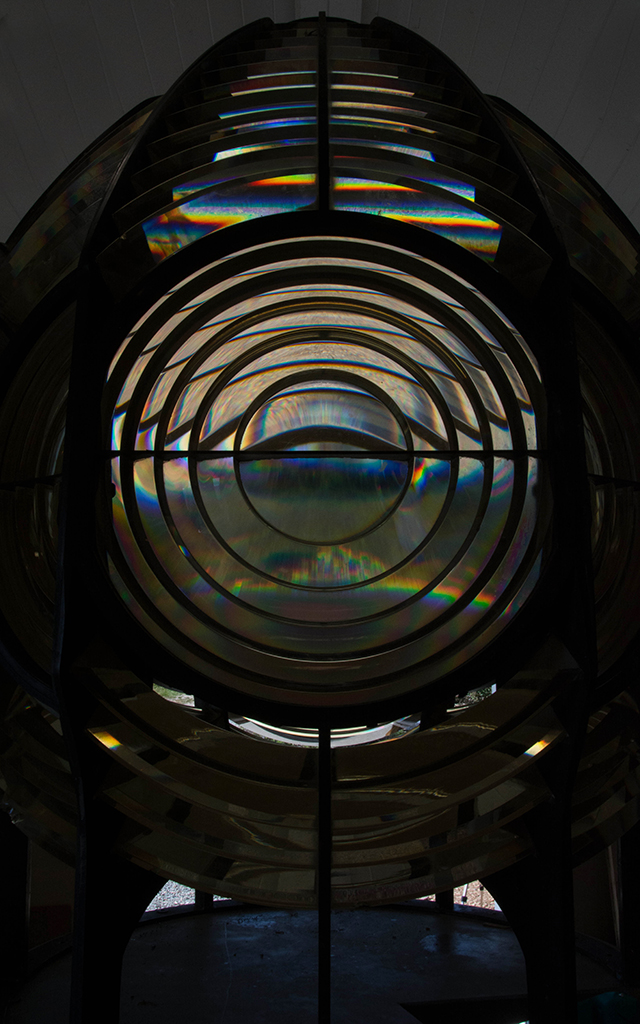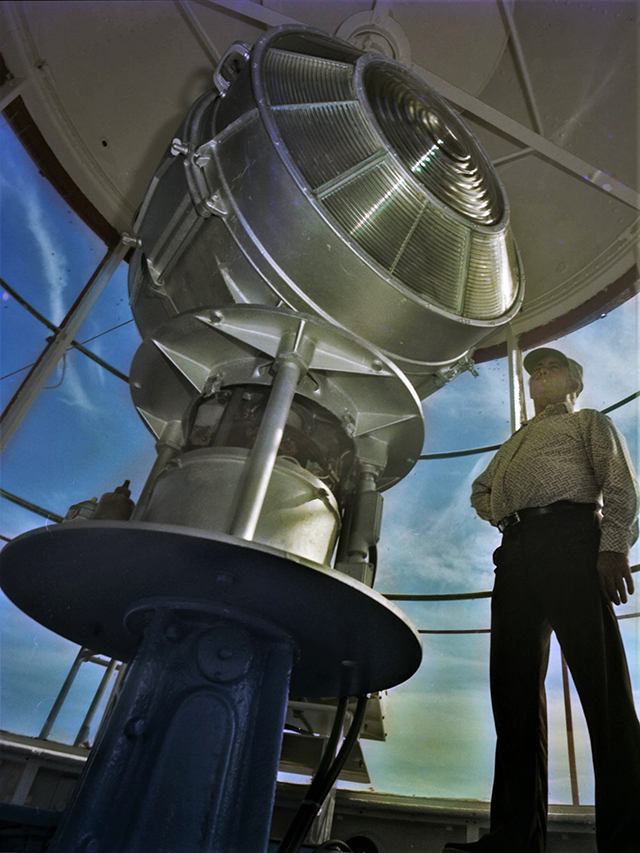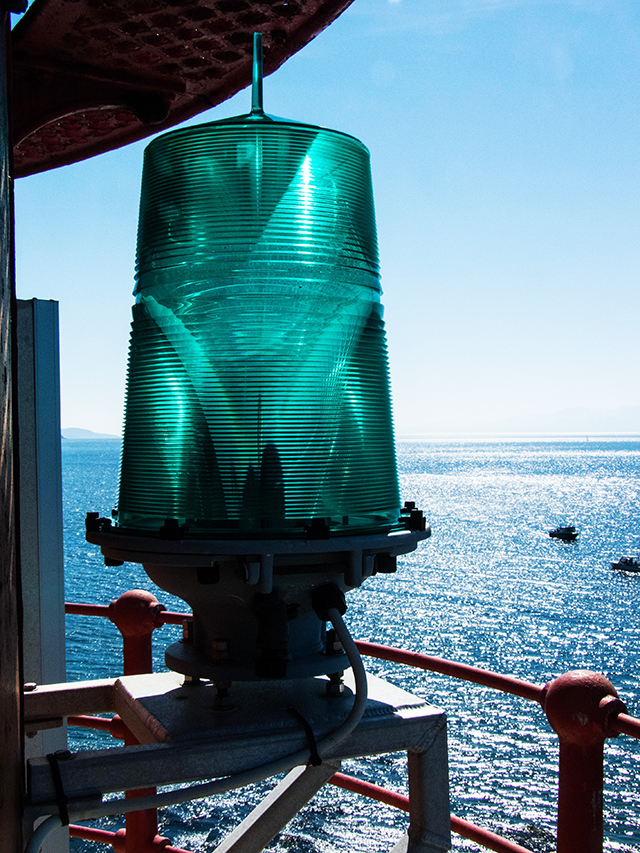THE LIGHTHOUSE LENSES
Fresnel Lens
In 1912, Sheringham Point Lighthouse was originally fitted with a 3rd Order Fresnel Lens. It was first illuminated on September 30 of that year by Eustace Arden, the first lightkeeper.
Sheringham Point’s Fresnel Lens consists of 122 glass prisms, mounted in brass frames in 18 sections, in a “clamshell” design. It is almost 2 metres high, over 2 metres wide and weighs over 2 tonnes.
The prisms were manufactured in France (the Frame’s origin is unclear), and purchased through the Inglis Company (Toronto) for $1935 plus $438 shipping.
The Fresnel Lens was first lit with an oil lamp and was later electrified. It remained in use until 1976. Shortly after it was removed from the Lighthouse, the lens was donated to the Sooke Museum, who have carefully looked after it since. It was put on display at the museum for a few years and was then placed in storage. It was transferred to the Sheringham Point Lighthouse Preservation Society in 2019, on a permanent loan.
Restoring and Displaying the Lens
In early 2022, the Sheringham Point Lighthouse Preservation Society constructed a small visitors’ centre at the lighthouse site, in order to be able to display the lens. In August 2022, the lens was removed from its storage crate and repatriated to the lighthouse site. It was in 19 component sections. Following cleaning and restoration, on August 25 the lens was reconstructed and installed in the visitors’ centre, mounted on a base that is a facsimile of the original base in the lantern room.
Crouse-Hinds DCB 36 Lens
After the Fresnel Lens was removed from the lighthouse in 1976, an electronic rotating lens was installed — a Crouse-Hinds DCB36. DCB stands for Directional Code Beacon. 36 indicates that it is 36 inches in diameter.
The Crouse-Hinds lens was lit with a 1000-watt incandescent bulb, producing a beam of 1,200,000 candlepower (or over 15 million lumens). The lens was fitted with a green filter, so the flash from the lighthouse appeared green. Its signature was a 0.15 second flash, followed by an interval of 14.85 seconds. The lens remained in use at the Lighthouse until it was automated in 1988.
Green Beacon
When Sheringham Point Lighthouse was automated in 1988, the Crouse-Hinds lens was replaced with an automated beacon that was mounted on the exterior of the lantern room. At first, it was a “252 Rotator” Beacon, and then this was replaced after a couple of years with a flashing Solariz Beacon.
This green beacon automatically turns on at night, and emits a flash for 0.15 second, followed by an interval of 14.85 seconds. This remains the published “signature” signal for Sheringham Point Lighthouse.





